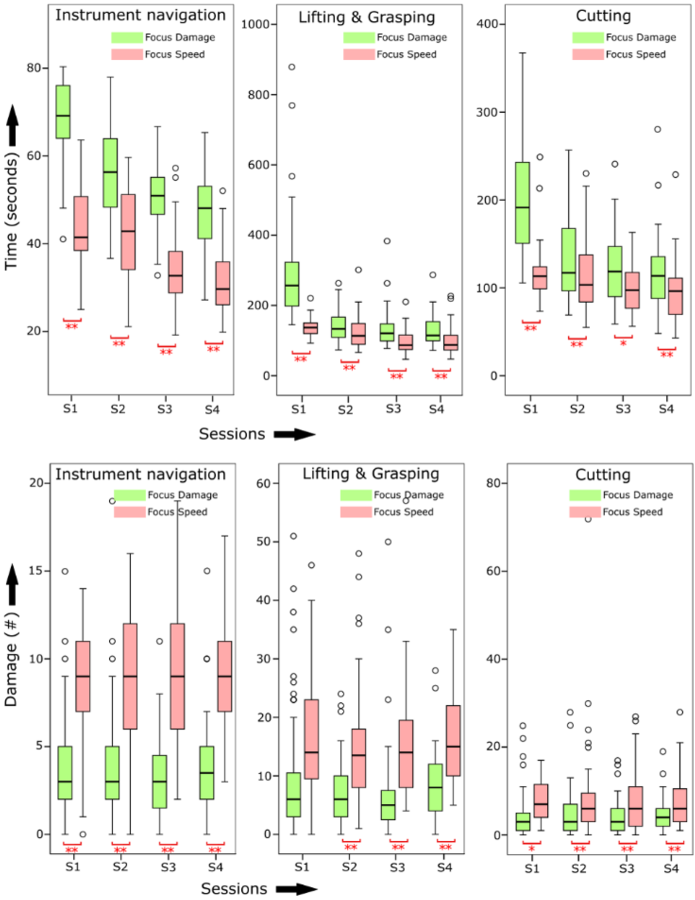PS8-04: TRAINING FOR SPEED OR FOR DAMAGE CONTROL: FEEDBACK EMPHASIS MATTERS IN LAPAROSCOPIC SIMULATOR TRAINING
Jan-Maarten Luursema, PhD1, Bas Kengen, MD2, Harry van Goor, PhD, MD1; 1Radboud University Medical Center, 2University of Maastricht
High impulsiveness students create more damage during virtual reality laparoscopic simulator training than students of low impulsiveness, yet they are equally fast. If we want to design adaptive training courses to mitigate the effect of impulsiveness on surgical performance, we need to know how. We used the customizable automated feedback feature of the LapSim virtual reality trainer to assess the effect of feedback emphasis on laparoscopic simulator performance, taking into account individual differences in impulsiveness.
Eighty-one medical students at the start of their surgical internships participated in a four-session, voluntary laparoscopic basic skills simulator training course. During each session they completed two series of three exercises on the LapSim virtual reality trainer. The exercises were identical for both series, but differed in feedback emphasis: during the speed series students received automated and quantitative feedback on task duration only, and during the damage control series students received feedback on the number and severity of damaging incidents only. Impulsiveness was measured with the Eysenck Impulsiveness Inventory test. Mann-Whitney U tests were used to analyze the data.
Participants were significantly faster in the speed series for every exercise in all four sessions (figure). They also created significantly less damage in the damage control series, except for the first sessions’ Lifting and Grasping exercise. Here, the difference was in the same direction, only did not reach significance. No differences in performance attenuation were found between students of high or low impulsiveness.

Differences in performance under different feedback emphasis. One star p<.05, two starts p<.01
Selecting feedback emphasis reliably changes laparoscopic simulator performance for students of different impulsiveness. This opens up a way to experimentally verify whether high impulsiveness students can be trained to perform as safely as low impulsiveness students. Additional work is needed to learn whether differences in impulsiveness have similar consequences in the complex reality of the operating room.
